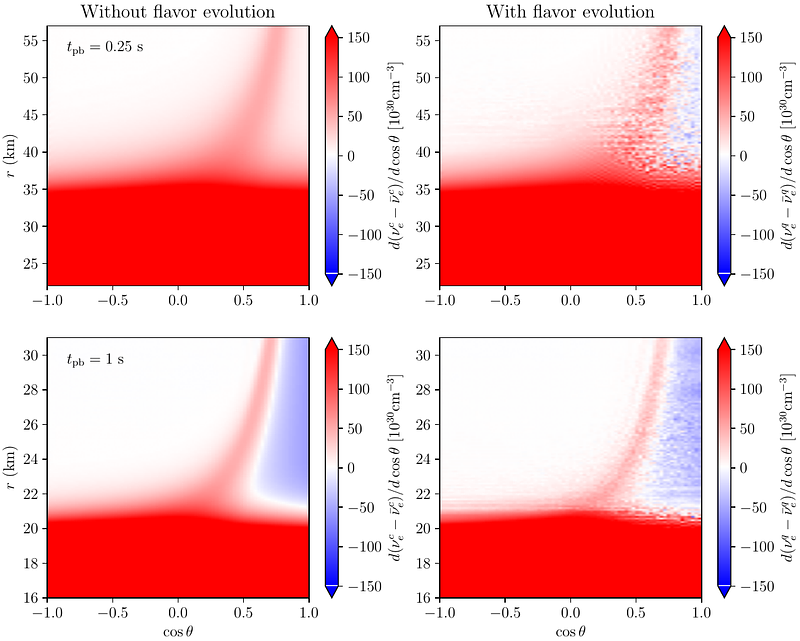Neutrino quantum kinetics in three flavors

Neutrino quantum kinetics in three flavors
Shashank Shalgar, Irene Tamborra
AbstractThe impact of neutrino flavor conversion on the supernova mechanism is yet to be fully understood. We present multi-energy and multi-angle solutions of the neutrino quantum kinetic equations in three flavors, taking into account neutrino advection and non-forward collisions with the background medium. Flavor evolution is explored within a spherically symmetric shell surrounding the region of neutrino decoupling in the interior of a core-collapse supernova, relying on the outputs of a spherically symmetric core-collapse supernova model with a mass of $18.6 M_\odot$. We select two representative post-bounce times: $t_{\rm pb} = 0.25$ s (no angular crossings are present and flavor conversion is triggered by slow collective effects) and $t_{\rm pb} = 1$ s (angular crossings trigger fast flavor instabilities). We find that flavor equipartition is achieved in the antineutrino sector between $\bar\nu_e$ and $\bar\nu_x = (\bar\nu_\mu + \bar\nu_\tau)/2$ for both post-bounce times. In the neutrino sector, flavor equipartition between $\nu_e$ and $\nu_x$ seems more likely at later post-bounce times, where the neutrino emission properties among different flavors tend to approach each other, but it is not a generic feature. The exponential growth of the $\nu_\mu$--$\nu_\tau$ asymmetry due to three-flavor effects is responsible for differences between the quasi-steady configurations obtained in the three-flavor solution and in the two-flavor approximation. This has consequences on the neutrino heating rate, which is generally larger when all three flavors are taken into account and can increase up to $30\%$ with respect to the case where flavor conversion is neglected.